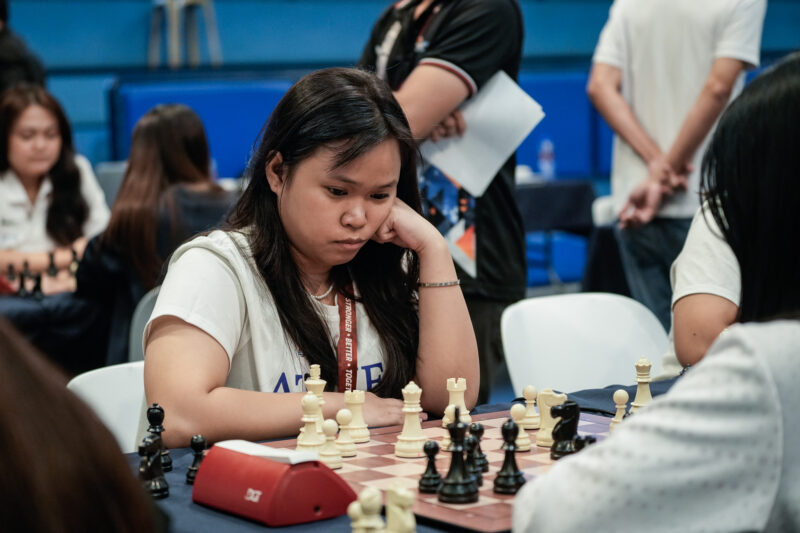THE LOYOLA Schools Constitutional Convention (ConCon) wrapped up day two of its delegate assembly readings with two approved amendment proposals concerning the structure of the Sanggunian on January 22 at the John Gokongwei School of Management room 211.
The said amendments pertain to Article VI of the 2005 Constitution of the Undergraduate Students of the Loyola Schools, namely, “The Composition of the Sanggunian.” The amendments were proposed by analysis and discourse cluster delegate Gabriel Marmeto and Ignatian Initiative for Transformative Empowerment delegate Jonas Cabochan.
Amendment proposals that were approved during the delegate assembly readings will remain tentative until the last week of February, when the revised constitution will be finalized.
The next reading is scheduled to take place on January 25 at SOM 111, and will focus on issues concerning the Ateneo Student Judicial Court and the Ateneo Commission on Elections.
Fixing redundancies
Garnering 13 “yes” votes and two in the opposition, Cabochan’s amendment proposal asked to treat the central board positions of secretary-general and finance officer as department heads instead.
Additionally, Cabochan also proposed to remove the school board positions of executive officer and secretary-treasurer.
He said that the executive officer is a redundant position because “it is basically a position filled already by the central board representative [along with] the course and block representatives.”
As for the removal of the secretary-treasurer, Cabochan pointed out that its duties and responsibilities may be fulfilled instead by the finance officer who will then act as a department head in charge of handling matters on finance.
Empowerment and realignment
Marmeto’s amendment proposal, which garnered 15 “yes” votes and none in the opposition, initially sought to consolidate Articles VI, VII, and VIII of the constitution into one: Article VI entitled “The Composition and Responsibilities of the Units of the Sanggunian.”
Articles VII and VIII of the constitution contain provisions about the Sanggunian Central Board and the Sanggunian School Board, respectively.
Marmeto proposed that the central board be chaired by the vice president, who will then “handle internal affairs of the Sanggunian.”
He said, “We believe that the [vice president] shall be impartial when it comes to the decisions [made by the Sanggunian].”
Moreover, Marmeto wanted to empower the school boards by giving them provisions that “actually concretize and strengthen” their powers.
“The [school] chairperson will be the one to maintain autonomy of the school board in all things including its executive, legislative, judicial and fiscal powers so long as they follow university-wide policies,” he said.
He stressed that the school boards should be able to know “how to give their own budget because they are the ones directly involved in their own schools.”
Marmeto added, “If [the school boards] know what their school needs and they can propose them for the creation of their budget, it will be easier for them to disburse funds or to even make them accountable for all the problems that may [ensue].”
Organizational cross-integration
In his speech, Council of Organizations of the Ateneo (COA) President Iesous Hernandez said he wants to raise “a level of integration” between student organizations and the Sanggunian so that the COA President may “become closer” to the latter on a more executive level.
He took the organizational structure of several student organizations of Ateneo de Davao University as an example, in which the head of the Campus Clubs Organization also served as the internals vice president of their student government, whereas the COA President is only a member of the Central Board.
To protect the autonomy of the organizations, however, he says most decisions regarding organizations should still be made by COA, and not the Sanggunian.
Moreover, Hernandez praised the Loyola Schools for the “strong organizational culture” that is evident among their constituents.
He added that 90% of students apply for organizations, and mentioned that COA has the “channels for communication” in order to connect students to their student government.
Unclear end
Amid the interpellations on the different amendment proposals, mixed opinions regarding student representation were heard from the delegates.
Low population courses delegate George Alexander Pappas shared his sentiments towards the value of joining organizations in a student’s life, as he believes students find their identity and advocacies through their affiliations.
However, he stressed that not all students affiliate themselves to organizations. “Not everyone has an advocacy, so if you’re going to separate them by advocacy, you’re going to separate people.”
John Gokongwei School of Management delegate Nicole Beatriz Veloso stated that she believes that if the Sanggunian focuses too much on representation alone without implementing projects, it will become more irrelevant as students already wonder what the Sanggunian is doing.
Business cluster delegate Gab Orlina, on the other hand, pointed out the lack of an end goal.
“We’re creating a means, but we don’t know what the end is. What kind of Sanggunian do you see after all of this?” he said.







